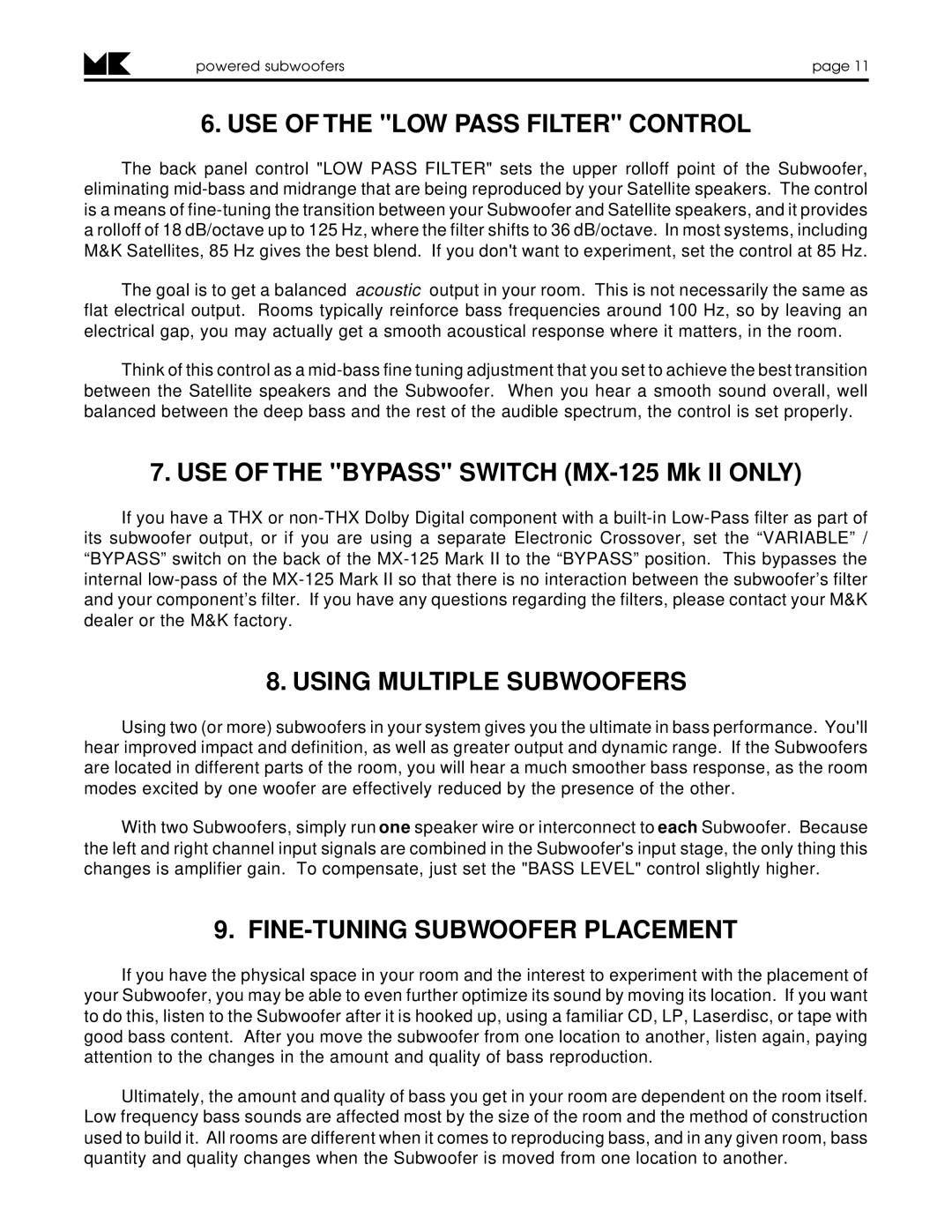|
| powered subwoofers | page 11 |
|
|
|
|
6. USE OF THE "LOW PASS FILTER" CONTROL
The back panel control "LOW PASS FILTER" sets the upper rolloff point of the Subwoofer, eliminating
The goal is to get a balanced acoustic output in your room. This is not necessarily the same as flat electrical output. Rooms typically reinforce bass frequencies around 100 Hz, so by leaving an electrical gap, you may actually get a smooth acoustical response where it matters, in the room.
Think of this control as a
7. USE OF THE "BYPASS" SWITCH (MX-125 Mk II ONLY)
If you have a THX or
8. USING MULTIPLE SUBWOOFERS
Using two (or more) subwoofers in your system gives you the ultimate in bass performance. You'll hear improved impact and definition, as well as greater output and dynamic range. If the Subwoofers are located in different parts of the room, you will hear a much smoother bass response, as the room modes excited by one woofer are effectively reduced by the presence of the other.
With two Subwoofers, simply run one speaker wire or interconnect to each Subwoofer. Because the left and right channel input signals are combined in the Subwoofer's input stage, the only thing this changes is amplifier gain. To compensate, just set the "BASS LEVEL" control slightly higher.
9. FINE-TUNING SUBWOOFER PLACEMENT
If you have the physical space in your room and the interest to experiment with the placement of your Subwoofer, you may be able to even further optimize its sound by moving its location. If you want to do this, listen to the Subwoofer after it is hooked up, using a familiar CD, LP, Laserdisc, or tape with good bass content. After you move the subwoofer from one location to another, listen again, paying attention to the changes in the amount and quality of bass reproduction.
Ultimately, the amount and quality of bass you get in your room are dependent on the room itself. Low frequency bass sounds are affected most by the size of the room and the method of construction used to build it. All rooms are different when it comes to reproducing bass, and in any given room, bass quantity and quality changes when the Subwoofer is moved from one location to another.
